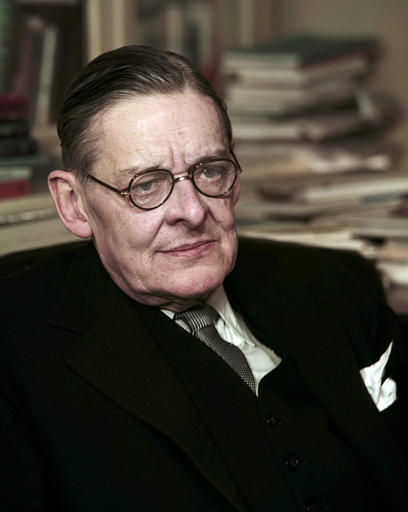The Function of Criticism
By – T.S.Eliot
Introduction of Essayist:-
Thomas
Stearns Eliot was born on 26 September 1888, in Missouri, US. He was a poet,
dramatist, literary and social critic, essayist and editor also. He educated at
AB in philosophy. He got awards like Nobel Prize in Literature (1948). His
Notable works are ‘The Love Song of J.Afred Prufrock’ (1915), ‘The Waste Land’
( 1922 ), ‘Four Quartets’ ( 1944 ). In all these works ‘ The Love song of J. Afred Prufrock’ is seen
as a masterpiece of the modernist movement.
“Tradition
and Individual Talent” (1921), “Hamlet and his problems “are his famous essays.
He died on 4 January 1965 in London, England.
Introduction of Essay:-
This essay
is response to essay of Murray. Murray have problem to that don’t use tradition
, but Eliot believed that don’t follow tradition but learn tradition, he believed that the use of the tradition in creative way, because tradition is
past, without past present we don’t know. Reproduction is important. Follow is
bad but productive in new way, you represent creative out put. Create new by using
old, don’t any tress of old.
“Tradition
and Individual talent” Eliot’s dynamic conception of tradition.
This essay
is an outcome of the controversy that was created in the year 1919 it is
actually the response to Murray’s essay on Eliot essay of “ Romanticism and
tradition”. In this particular essay he showcases the relationship between past
and present in world literature.
Definition of criticism :-
According to
Eliot criticism is the analysis of the works of literary nature, criticism
always has to be about something and it’s goal his to give proper explanation
about all literary texts.
First Part :-
Superior to
nature as both of them are depended yet independent any writer and his or her importance
is considered by looking into the tradition. Maturity + Understanding = Critic
Sometime
critics deform from each other because of there personal biases, Eliot believes
that all the critics should cooperate in order to critics of particular text
make a responsive criticism is important in literature.
Murray’s views on the classic and
Romantic
Second part :-
In the
second part of this essay Eliot talks about Murray’s views on classicism and
Romanticism according to Murray a classical writer can not be a romantic writer
a romantic writer can not be a classical writer. Eliot does not subscribe to
this view and does not believe that English people are romantic and French
people are classic.
In the
latter part of the essay Eliot discuses the problem in criticism and goes again
the view of Mathew Arnold. There is a lot of different between creative writers
and critical writing. Mathew Arnold differences between critical and creative
writing. According to Eliot criticism is also of equal important and any critic
has to be creative in order to criticizes a text.
Some of the
critic are capable of cretizining there own work because more correct and
structured he continuously agreed that critical and creative writing can not be
separated.
According to
Eliot the most important qualification of any critic is that he or she should
be able to recognize the important of facts, which is a rare qualities the
critic should get into the details of the fact. Any critic or artist should surrender
and sacrifices himself or herself in order to get the meaning of the text.
“Total involvement in art and for art”.
He or she
would make sure that there are united to gather a common agenda. This is the
quality of the first rate artist where as the second rate artist does not
believe in this and works in a completely opposite direction. Art always has a
predestined conclusion by the elucidation of the works of art and the
correction of test. It may happen that there are different in opinion but all the different should be respected or
should be worked upon in close connection.
Third Part :
- “ Inner voice treatment of it”.
In the third part Eliot completely
goes against the views of Murray as it is all common principal in order to
achieve perfection in art. The artist who believes in the inner voice is not
tradition and the wisdom and the experience but also of the present which can
be extremely advantageous. Girt felling is always right and wisdom is important
in writing and criticism because wisdom make critic.
Fourth Part
: - Criticism and the creative faculty
As we have written earlier
there is no different between a creative writers and a critical writer. Both of
them are almost the same as the later of the labor of an other is composting
the critical labor and any writer who can criticizes his own work is the highest
kind of criticism. When you criticizes your work you have to see fault line in
your own work and no one can judge you without you. Can there be a creative
criticism?
Qualification
of a Critic :-
(1)
In
order to be a good critic one has to developed and extraordinary sense of facts
about the work of art, the condition, the setting and mannerism.
(2)
Any
critic has to be good in comparison and
analysis about the theme, plot and technical aspects like the structure and the
contain of all of them. They should be taken to gather in order to interpret
it.
(3)
Facts
are not always beneficial because they can be misleading facts should be in close connection to what
you are writing upon.
(4)
A
good critic has to be extremely objective in nature and should have a
scientific attitude by fallowing all the above mentioned points.
Conclusion :-
Eliot strongly believes in the concept
of individuality and originality but in a different manner that is by
respecting by tradition and taking it’s cooperation to design the present.

No comments:
Post a Comment